1. Mainboard (MB)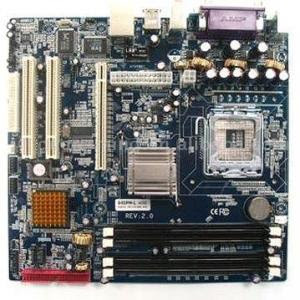
Mainboard is a main circuit board where the installation of several components such as VGA card, Lan Cards memory, TV tuner, video card, and others. There are also some components of the mainboard which is built above it onboard (embedded), so it can not be revoked. Selection of a good MB package is from the manufacturer that includes the specifications, so it will be easy if you want to improve their performance. Notice in the specification of MB is mainly on the ability Processor Support, Memory Support, Expansion Slots, Power Supply & Management, Graphics System, On-board I / O ports, hardware monitoring and other components that are available on the MB is.
For more priority to individual computer hardware that can support the video graphics and high RAM, in addition to multimedia more prominent than for the needs of the office. For that MB which should be chosen on an individual computer is having a good AGP VGA slot (8 or 16x), and has a high board cache memory.
2. Processor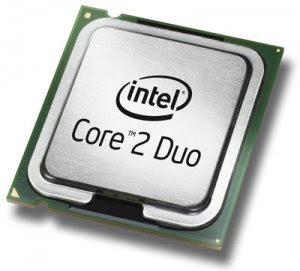
Processor or also called the Central Processing Unit (CPU), symbolized by the μP or UP is a hardware that carrying out orders (instructions) and process data from the Software. CPU manufactured in integrated circuits, often within a chip package or IC (Integrated Circuit) single. Since the mid-1970s, single-chip microprocessor is already common in the implementation of the CPU. CPU is formed from a collection of millions of transistors that are located within a chip package or IC (integrated circuit) semiconductor. It is small, the IC is made from slabs of silicon.
CPU functions perform arithmetic and logic operations on data taken from the RAM (Random Access Memory) or from information entered through some hardware, such as Keyboard, Scanner (Scanner), Control Panel and Mouse. CPU is controlled by a set of instructions from computer software. Instructions of the software is run by the CPU to read from the storage media, ie hard drives, floppy drives, and CD / DVD ROM / RW Drive. These instructions are then stored in advance on (RAM), where each instruction will be given a unique address called a memory address. Furthermore, the CPU can access data in RAM to determine the address of the desired data.
When a program is run (diekseskusi), flow data from RAM to a unit called the bus (read: shared bus on the motherboard segment), which connects the CPU with RAM. The data is then translated into the codes by using the unit process known as pendekoder instruction. The data then travels to Aritmatic Logic Unit (ALU) that perform calculations and comparisons. Data can be stored temporarily by the ALU in a memory location called the registry, so that can be retrieved quickly for processing. ALU can perform certain operations, including addition, multiplication, subtraction, testing conditions on the data in the registry, to transmit the processing results back to the RAM, storage media, or registry, if will process the results of further processing. During this process occurs, a unit within the CPU, called the program counter will monitor the instruction successfully executed so that instruction can be executed in the correct and appropriate.
3. Random Acces Memory (RAM)
In order to improve computer performance, especially a Windows-based application, then the RAM is very determining role in particular in access speed, so the program can run more than one of the program. For example, to open two applications at once Word and Excel together, or typing while listening to songs and so forth, then the role of RAM is crucial.
4. Disk drive/Floppy disk 5. Hard Drive/Hard Disk
5. Hard Drive/Hard Disk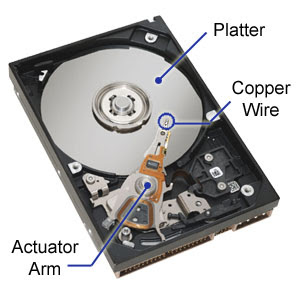
The process of making the hard disk itself consists of a magnetic coating that is sprayed on the surface of a smooth plate with high-tech (Susan B. Sasser et al, 1996). Just like floppy disks or cdroom, then the process of making the hard disk is the same. If the head shape of a floppy disk, then on the hard disk is smaller. Besides, every dish on the hard drive must spin at high speeds, so it is natural that over time replaced with a new flow.
At low speed hard disk (5400 rpm) is usually cheaper than the high speed of 7200 rpm, even with the same amount of capacity. For high-speed hard disk that is more often found on the user server to the network (Network). Moderate to low speed is usually used in personal computers in the homes or in offices that do not use the network.
The advantages of using high-speed access is to store programs and data faster, but in quotes that the difference between them is not too flashy, so can not be seen clearly the difference.
6. Casing
Casing for computer berprocessor s / d 2 (P II) is a model of AT. After the change of levels to P III and IV then adjust powernya casing by adding facilities and resources and then became ATX design. The difference in the two types of casing is in the output power and the type of socket to support the existing Main Board.
Considerations before buying the chassis:
Power supplynya has how many Watts of output
Number of output cables for cooling purposes and the amount of fan / fan attached
The shape and some animation.
7. CD ROM/DVD ROM Read or Write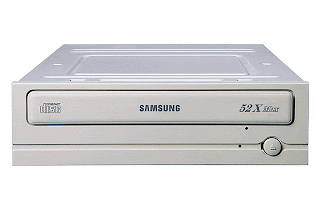
As much as whether the data which we will transfer / read all the time
Specification of existing computer
The frequency of usage between the reading of data with the use of more multimedia where
Conditions of funds available
Brand and type of CD DRIVE to be purchased.
8. Speaker
The amount PNPO which is on the speakers are
Specifications of the computer
Our work space, surrounding environment, and the atmosphere so as not to disturb the surrounding environment.
9. Keyboard
10. Mouse
Mouse is one unit of input (input device). The function of this tool is to move the pointer or cursor quickly. Also, it can as a practical command and faster than with a keyboard. Mouse began to use the most since the operating system has been based GUI (Graphical User Interface). Electrical signals as a mouse input device is generated by a small ball inside the mouse, in accordance with the shifts or movement. Most of the mouse consists of three buttons, typically only two buttons are used, namely the left and right buttons. When this mouse is also equipped with rollers button (scroll), where the location of this button located in the middle. The term suppression is called by clicking the left button (Click) where the emphasis is going to function when the mouse is at a designated object, but if not in a designated object of this emphasis will be ignored. In addition there is also another term called the move (drag) that is pressing the left mouse button without releasing it with while being moved. This drag will cause the object will be moved or copied to another object and other possibilities. The emphasis of the left mouse button twice quickly and regularly called on double click (double click) while pressing the right mouse button once called the right-click (right click). Mouse consists of several types of mouse serial port, mouse ps / 2, usb and wireless. Mouse is also growing rapidly, ranging from wireless wirelessly to an optical manifold. Some companies exist that emit a 2in1 product (ie keyboard and mouse) is also an issue that is a plus speaker 3in1. In terms of prices are cheaper, but there are also disadvantages that the sound quality is less good.
11. Monitor
The monitor can be analogous as a building with three rooms: one fruit of the control room, one room-waiting-in, one-in-waiting room. When a thread enters the monitor, he entered the waiting-in-space (enter). When his turn arrived, the thread enters the control room (acquire), here thread to complete its task with shared resources that are in the control room (Owning). If the task thread is not finished but the allocation of her time is up or the thread waiting for another thread work is finished, thread releases control of the monitors (release) and transferred to room-in-waiting (waiting queue). When his turn came again, thread into the control room again (acquire). If the task is completed, he came out of the monitor (release and exit)
12.VGA 13. Soundcard
13. Soundcard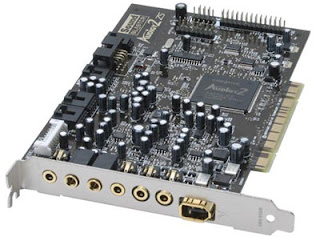
- Sound Card Onboard, the sound card is attached directly to the computer's motherboard.
- Sound Card Offboard, the sound card is installed in slot ISA / PCI on the motherboard. On average, now it uses the PCI
- External Soundcard, sound card which the user is connected to a computer via an external port, such as USB.